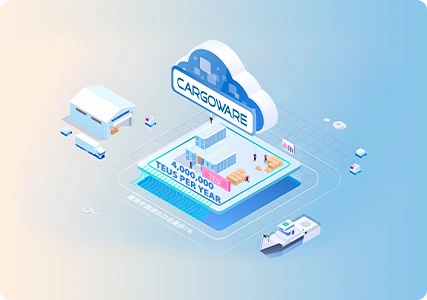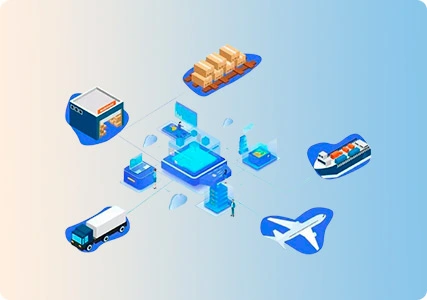
Challenges Facing Logistics Companies
The logistics landscape has undergone significant changes in the past three years. Supply chains have become vital for business survival and growth. However, even as the effects of the pandemic diminish, logistics companies continue to face challenges. Experts predict ongoing disruptions in the short term, including labor shortages, shipping deficiencies, and supply-demand imbalances.
The lack of resilience and visibility in the supply chain has led to numerous delays and errors, impacting both customer experience and financial results for companies. It has become clear that organizations need to quickly optimize their supply chain management and logistics operations. For many, the solution lies in digitization.
The Importance of Data
Data is the lifeblood of logistics digitization. It enables the development of more efficient and effective processes and systems, forming the foundation for data-driven decision-making. While data has always played a crucial role in logistics, the advent of digital technologies has heightened its significance. The volume, velocity, and variety of data generated by logistics operations are growing exponentially, and effectively managing this data is critical for success. Logistics digitization involves leveraging digital technologies to transform traditional, manual, and paper-based logistics processes into modern, automated, and data-driven approaches.
The benefits of logistics digitization are numerous, with improved efficiency, accuracy, and transparency being the most significant. Logistics providers have long utilized digital technologies such as enterprise resource planning (ERP) system, transportation management system (TMS), and warehouse management system (WMS) to enhance operational efficiency and accuracy. More recently, big data, analytics, and artificial intelligence (AI) have presented new opportunities for further efficiency improvements and enhanced decision-making.
Applying Digitization in Your Logistics Company
When implementing digital transformation initiatives in logistics, it is crucial to consider the specific circumstances, challenges, sector opportunities, and objectives of your company. Here is a step-by-step approach to guide you:
Establish a starting point and set targets: Begin with an analysis of the current state of the areas most affected by digitization. This may include document management, software and hardware capabilities, process organization, and more. This analysis will provide the foundation for defining the objectives of your digital transformation project.
Ensure quick budget approval: With clear priorities in place, overcome internal company bureaucracy to facilitate the necessary technology investments for digital transformation.
Rely on Talent 4.0: Seek out individuals with specialized training in supply chain management and prioritize those with advanced skills in software and digitalization.
Foster continuous improvement: In logistics processes, it is essential to analyze each phase and measure the results using key performance indicators (KPIs) to make decisions that enhance effectiveness.
Successful examples of digital transformation in logistics at various levels include intelligent management of the Rent a Book facility through the deployment of a WMS and the automation of the BH Bikes logistics center using a mini-load warehouse and pallet stacker cranes.
Implementation Challenges
Implementing logistics digitization can be challenging for logistics providers. It requires significant investments of resources, including finances, time, and personnel. It also necessitates a change in mindset and company culture, embracing experimentation and adopting new technologies.
While many companies have taken initial steps toward digital transformation, the process can be more complex and demanding in the realm of logistics. Several factors need to be considered when integrating new technologies into your logistics operation. It is crucial to ensure that the chosen technology aligns with your objectives and improves your overall operation. Additionally, compatibility with existing systems and any necessary adjustments must be evaluated.
Another key challenge is ensuring that staff members are adequately trained and comfortable using the new system. While this may require a significant investment of time and money, it is essential to get everyone on board to maximize the benefits of the new technology. Lastly, determining the metrics for measuring the success of the new system is critical. Define relevant KPIs to track progress and ensure that the technology delivers the expected benefits. Logistics digitization is a complex process, but with proper planning and preparation, it can be a highly advantageous move for your business.
There are still challenges that need to be addressed before full implementation of digitization in the logistics industry. One major challenge is the lack of standardization across the industry, making it difficult for businesses to exchange information and connect electronically. Additionally, integration between different software systems remains a challenge, hindering a complete view of the supply chain. Lastly, logistics digitization requires substantial investments of time and money, which can pose barriers for small and medium-sized businesses.
For more information about eTower, visit our website www.etowertech.com.









